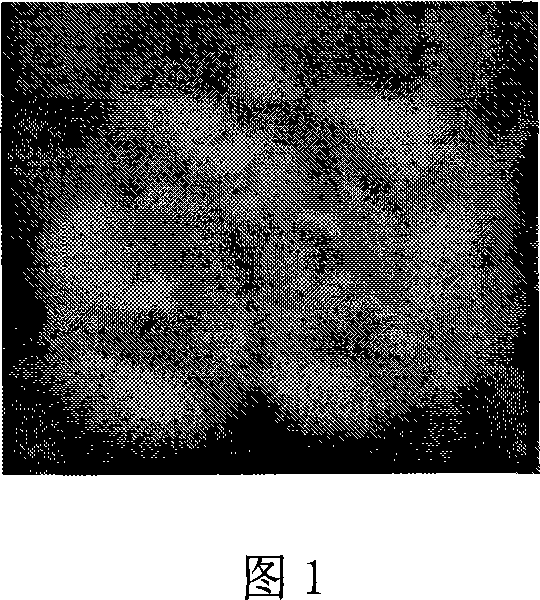Fusarium solani P-1 mycopremna and use in degradation of polychlorinated biphenyl thereof
A technology of Fusarium rot, polychlorinated biphenyls, applied in fungi, microorganism-based methods, restoration of polluted soil, etc., can solve the problems of secondary pollution, low efficiency and high cost
- Summary
- Abstract
- Description
- Claims
- Application Information
AI Technical Summary
Problems solved by technology
Method used
Image
Examples
Embodiment 1
[0018] Example 1: Screening of Fusarium solani P-1
[0019] Will (NH 4 ) 6 Mo 7 o 24 4H 2 O 5.28g, ZnSO 4 ·7H 2 O 29.87g, CuSO 4 1.28g, H 3 BO 3 4.0g, MnSO 4 ·H 2 O 2.805g, CoCl 2 ·6H 2 O 4.0g was made into 1L solution, and sterilized at 115°C for 20 minutes to obtain a trace salt solution. Will KH 2 PO 4 2.93g, K 2 HPO 4 ·3H 2 O5.87g, MgSO 4 0.3g, FeSO 4 ·7H 2 O 0.01g, NaCl 2.0g, (NH 4 ) 2 SO 4 5.0g, CaSO 4 ·H 2 O 0.44g, mixed with trace salt solution 2mL, supplemented with distilled water to 1000mL, pH 7.0, sterilized at 115°C for 20 minutes to obtain basic MM medium. Dissolve 2,2',4,4',6,6'-hexachlorobiphenyl in acetone, then add it to the basic MM medium, and sterilize at 115°C for 20 minutes to obtain a medium with a final concentration of 100 μg / mL p.
[0020] Take 5 g of rhizosphere soil from the mangrove rhizosphere soil of the semi-field mangrove wetland simulation system artificially polluted with PCBs for one year, dilute it 10 times...
Embodiment 2
[0022] The slant of Fusarium solani P-1 obtained in Example 1 was inoculated into tiger red agar medium, and cultured statically for 60 hours at 27°C, and the obtained bacterial strain was inoculated in 150 mL of medium P with an inoculation loop under aseptic conditions. Under the condition of 27°C, shake culture for 60 hours, collect the bacteria, wash 3 times with 0.05mol / L PBS (pH7.5), then resuspend and dilute to OD 600(600nm broad density value) is 1.0, inoculate 1% into a serum bottle containing 5mL basal MM medium and Aroclor1254 content of 50μg / mL, cover with a rubber stopper, and culture on a shaker at 30°C 200r / min for 10d. Another inoculation of the same concentration of bacterial solution in a boiling water bath for 30 minutes was used as a control.
[0023] Add 4 times the volume of n-hexane to the serum bottle, cover with a rubber stopper whose inner surface is polytetrafluoroethylene, seal it with an aluminum cap, put it into a constant temperature oscillator f...
PUM
 Login to View More
Login to View More Abstract
Description
Claims
Application Information
 Login to View More
Login to View More - R&D
- Intellectual Property
- Life Sciences
- Materials
- Tech Scout
- Unparalleled Data Quality
- Higher Quality Content
- 60% Fewer Hallucinations
Browse by: Latest US Patents, China's latest patents, Technical Efficacy Thesaurus, Application Domain, Technology Topic, Popular Technical Reports.
© 2025 PatSnap. All rights reserved.Legal|Privacy policy|Modern Slavery Act Transparency Statement|Sitemap|About US| Contact US: help@patsnap.com

